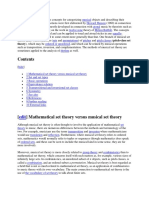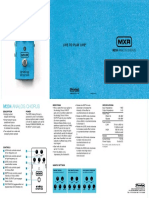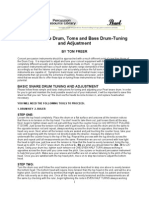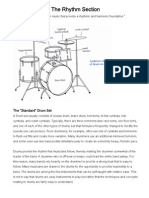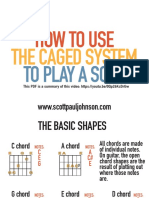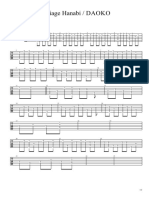0% found this document useful (0 votes)
156 views7 pagesBass Guitar History and Features
The document provides an overview of the history and development of the bass guitar. It discusses how the bass guitar was developed in the 1930s as a fretted, solid-bodied electric instrument by Paul Tutmarc. In the 1950s, Leo Fender developed the Precision Bass, the first mass-produced electric bass guitar. The bass guitar became popular among musicians as it was easier to transport than an upright bass and less prone to feedback when amplified. Gibson and other companies also began producing bass guitars in the 1950s and 1960s, as the instrument's popularity grew with the rise of rock music.
Uploaded by
robertoCopyright
© © All Rights Reserved
We take content rights seriously. If you suspect this is your content, claim it here.
Available Formats
Download as DOCX, PDF, TXT or read online on Scribd
0% found this document useful (0 votes)
156 views7 pagesBass Guitar History and Features
The document provides an overview of the history and development of the bass guitar. It discusses how the bass guitar was developed in the 1930s as a fretted, solid-bodied electric instrument by Paul Tutmarc. In the 1950s, Leo Fender developed the Precision Bass, the first mass-produced electric bass guitar. The bass guitar became popular among musicians as it was easier to transport than an upright bass and less prone to feedback when amplified. Gibson and other companies also began producing bass guitars in the 1950s and 1960s, as the instrument's popularity grew with the rise of rock music.
Uploaded by
robertoCopyright
© © All Rights Reserved
We take content rights seriously. If you suspect this is your content, claim it here.
Available Formats
Download as DOCX, PDF, TXT or read online on Scribd
/ 7
















